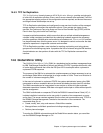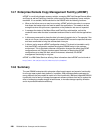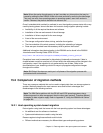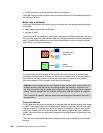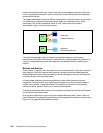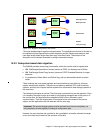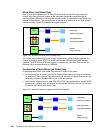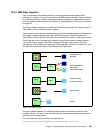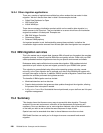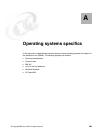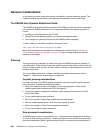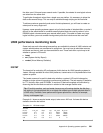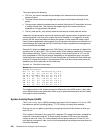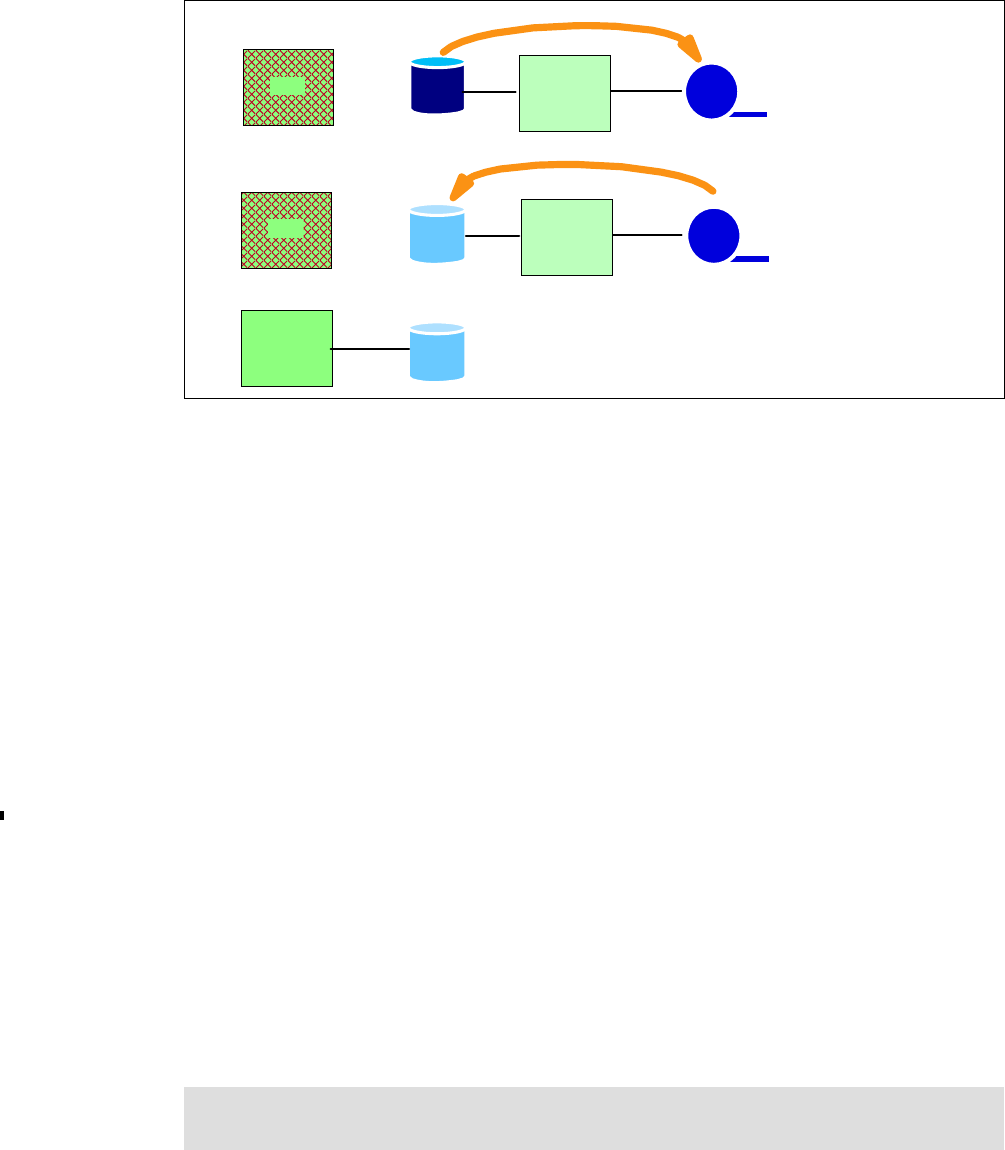
Chapter 15. Data migration in the open systems environment 295
Figure 15-5 Migration using backup and restore
The major disadvantage is again the disruptiveness. The applications that write to the data to
be migrated must be stopped for the whole migration process. Backup and restore to and
from tape usually takes longer than direct copy from disk to disk. The duration of the
disruption can be reduced somewhat by using incremental backups.
15.2.2 Subsystem-based data migration
The DS6000 provides remote copy functionality, which also can be used to migrate data:
IBM TotalStorage Metro Mirror, formerly known as PPRC, for distances up to 300km
IBM TotalStorage Global Copy, formerly known as PPRC Extended Distance, for longer
distances
A combination of Metro Mirror and Global Copy with an intermediate device in certain
cases
These methods are host system agnostic and can therefore be used with only minimum
system administrator attention. They also do not add any additional CPU load to the host
systems, and they don't require the host system to be connected to both storage systems at
the same time.
The necessary disruption is minimal. The initial copy is started during normal operation. Once
it is complete, the target is kept up-to-date by only copying changes made to the source. At
the cut over time, the applications are stopped and the mirror is allowed to reach
synchronization. Then the target system is connected to the host instead of the source
system and the applications can be restarted with the new copy.
However, the copy functions do not allow for the consolidation of smaller volumes into larger
ones, since they are not aware of the structure of the data.
Host
Backup all data
Stop applications
Backup
System
Host
Restore data
Backup
System
Host
Restart
using new copy
Intermediate device
Important: The source storage system must be removed from the host completely, not
only physically, but also logically, including all configuration data.



